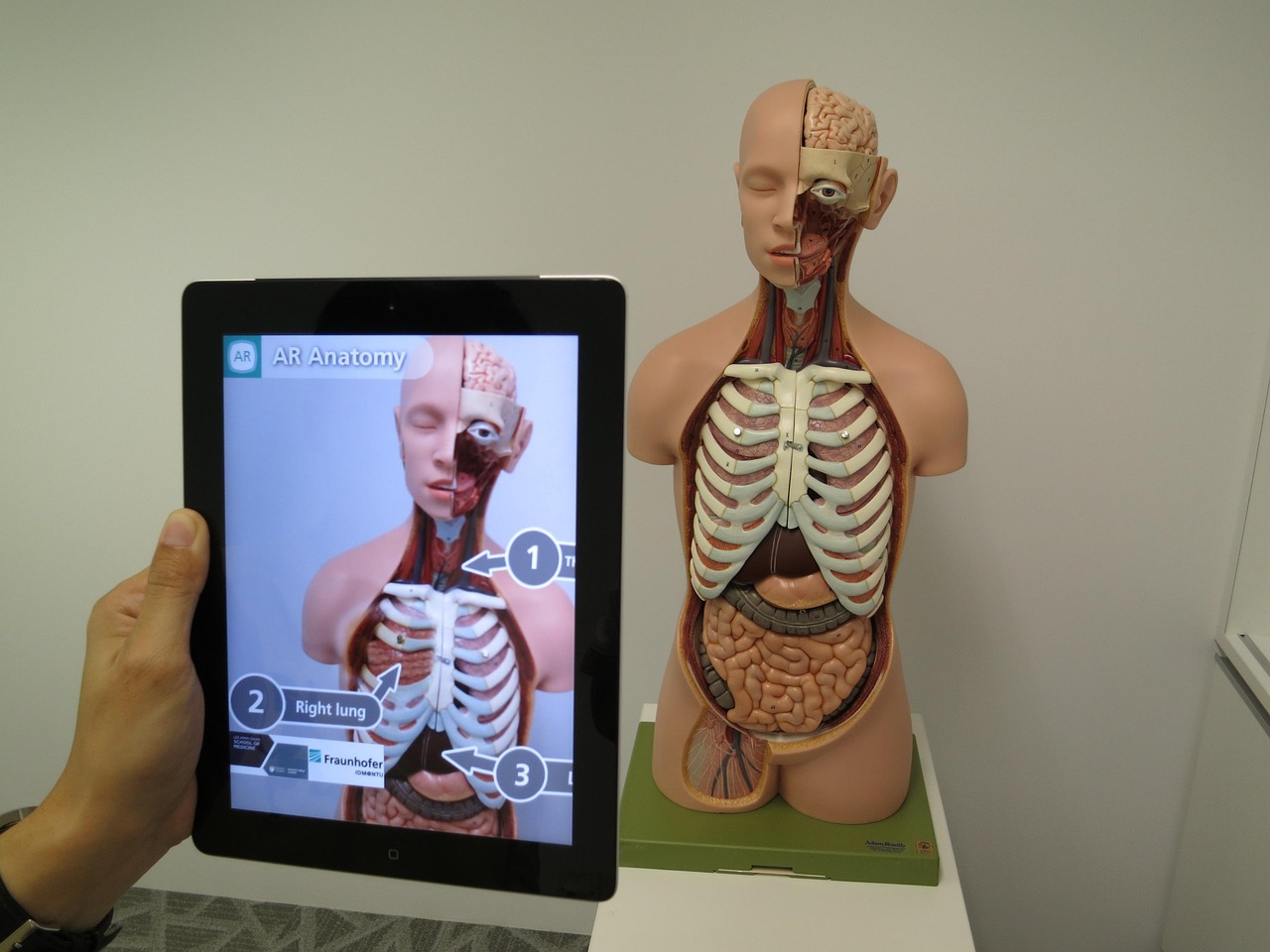Augmented Reality (AR) stands today as one of the most influential technologies which affects multiple industries including education during recent years. AR merges real-world environments with digital content to create innovative educational interactions between students and their instructors.
The article examines AR’s substantial educational effects by explaining student learning methods and environmental learning advantages while discussing difficulties during implementation.
What is Augmented Reality (AR)?
Augmented Reality (AR) enables digital content such as images and videos and sounds to be superimposed onto real-world environments through smartphones and tablets and AR glasses. AR differs from Virtual Reality (VR) because it enhances real-world environments by adding interactive digital components that users can manipulate in real time.
Students can view a 3D heart model through an AR app which superimposes the digital model onto their physical textbook for interactive exploration. The technology enables students to better understand complex ideas because it makes them more concrete.
How AR is Used in Education
AR technology creates a global educational impact by transforming classrooms worldwide through its applications in science and math as well as history and art education. AR technology serves educational purposes in multiple ways which can be observed through these specific examples:

- Through AR students can visualize complex concepts by converting abstract ideas into interactive three-dimensional models. Biology students who study DNA molecules in 3D benefit from visualizing their shapes which enhances their understanding of the content.
- Through AR students can interact with digital content in immersive learning programs. Educational apps such as Google Expeditions enable students to experience virtual field trips to historical sites and outer space which makes learning experiences both engaging and memorable.
- AR simulations replicate real-world scenarios to train students in technical and medical fields. Medical students benefit from AR simulations that let them practice surgical procedures and study anatomy because they receive practical experience without facing actual risks.
Advantages of AR in Education
AR implementation in educational settings produces multiple advantages which improve student learning outcomes. Here are some of the main advantages:
- AR technology creates deep student engagement as its main learning benefit. The interactive visual features of AR draw student attention while sparking their curiosity about the material. The interactive nature of AR technology promotes student engagement which transforms education into an enjoyable dynamic learning process.
- AR technology enables students to receive learning experiences that are adapted to their individual needs. Students can navigate educational content according to their speed while interacting with resources that match their personal learning preferences. AR technology enables students to concentrate on particular subject areas which require additional attention thus creating personalized learning experiences.
- AR technology helps students understand concepts better through its ability to convert complex ideas into three-dimensional models. Students who use AR can manipulate digital objects while interacting with virtual environments which leads to better visual understanding of complex subjects.
- Through AR students can experience hands-on learning activities. Students can use virtual objects and environments through AR to gain practical experience from their classroom seats. The technology proves particularly beneficial for students who study engineering and chemistry and healthcare fields.
The Challenges of Implementing AR in Education
The implementation of AR technology in education produces various benefits yet it presents specific difficulties for its adoption:
- The implementation of AR technology requires substantial financial investment. Educational institutions need to acquire both hardware components such as AR glasses and tablets and software systems for implementation. Developing high-quality AR content and applications exceeds the financial capabilities of various educational institutions.
- The successful classroom implementation of AR demands that teachers receive training to understand how to use this technology while developing appropriate lesson plans. Educational institutions must provide continuous professional development alongside teaching method changes to teachers.
- The availability of AR technology varies widely between different users. The lack of device access for AR content experience creates an equity problem among students. The required technology implementation proves difficult for schools that operate in rural or underfunded areas.
The Future of AR in Education
AR technology demonstrates extensive educational potential which will expand substantially throughout the next few years. The following predictions outline how AR technology will transform educational practices:
- AR technology will establish itself as a fundamental educational resource which schools will progressively implement to improve their teaching methods. AR technology will find applications across all subjects including STEM and humanities to create deep and interactive learning experiences for students.
- AR technology enables students from any location to access superior educational resources. Virtual field trips and simulations through AR technology enable students from any place to access learning opportunities which promote educational equity.
- The advancement of AR technology will lead to improved immersive and interactive capabilities. Future AR devices will combine light weight with affordability while delivering more sophisticated learning experiences.
The educational environment undergoes transformation through Augmented Reality because it provides students with groundbreaking methods to engage with educational resources. AR delivers interactive learning experiences that allow students to engage with their education through immersive and hands-on interactions which shows promise to improve educational quality at every educational level.
The future of AR education appears promising despite ongoing issues with cost and teacher training requirements. The development of this technology will create learning experiences that enhance student engagement while providing personalized education that reaches students from all corners of the globe.
Sources:

